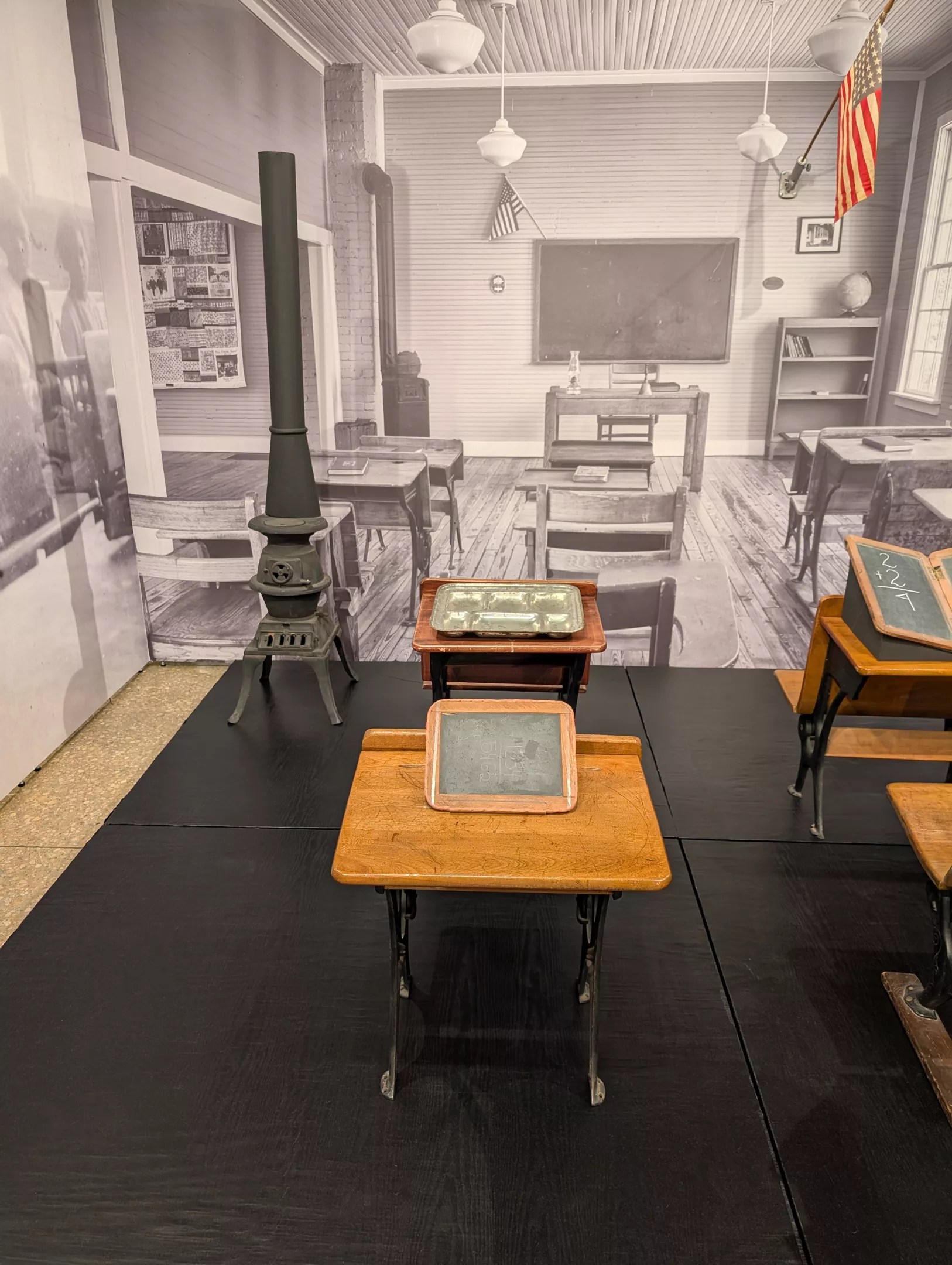
Bethany Weston

Audio By Carbonatix
About 1,400 people of all backgrounds and ages visited Dallas’ Holocaust and Human Rights Museum (DHHRM) on Thursday, June 19, to honor the 160th anniversary of Juneteenth.
The day’s programming centered on the humanity and achievements of African Americans in Dallas, a legacy that began with Union General Gordon Granger’s Juneteenth proclamation on June 19, 1865, which stated all saves were free. Visitors had a variety of events and activities to choose from throughout the day, including kid-friendly activities, film screenings and guided gallery tours.
Many of the visitors wandered the museum’s current special exhibit titled A Better Life for Their Children, which featured photographs by Andrew Feiler. The photographer traveled across the American South to capture images and stories about the Rosenwald Schools, a network of educational centers for Black children during the Segregation Era.
Lauren Ray, docent educator at the DHHRM, guided several dozen people through an engaging gallery talk. Guests learned how Julius Rosewald, a Jewish businessman and philanthropist, and Booker T. Washington, a Black educator and leader, collaborated to bring education to African American children in the southern states. From 1912 to 1937, nearly 5,000 schools were built across 15 states. Of that number, roughly 500 remain standing, and Feiler visited 105.
This year, make your gift count –
Invest in local news that matters.
Our work is funded by readers like you who make voluntary gifts because they value our work and want to see it continue. Make a contribution today to help us reach our $30,000 goal!
Prominent African American historical figures, such as John Lewis and Maya Angelou, graduated from Rosenwald Schools, and many of the schoolhouses that are still standing function as community centers today. And while vast inequalities were still present in Rosenwald schools due to Jim Crow laws, they provided a baseline education that was previously inaccessible to Black children.
Shirley Adams, a museum visitor and self-described history buff, said that these types of exhibits help Americans be cognizant of their history. She did not attend a Rosenwald school but grew up in Texas, and her own educational experiences serve as a powerful reminder of the past’s nearness.
“Our desks were like this,” she said, gesturing to the old-fashioned wooden and iron desks that took up the display space in the center of the gallery. “I was in the fourth grade before I saw a brand new textbook. We were so capable of doing more.”
The DHHRM’s Cinemark theater filled and emptied throughout the day as patrons viewed two different films: Rising: The Hall of Negro Life and Freedman’s Town. The latter focused on the multiple “towns” that sprang up within Dallas as formerly enslaved people formed tightly-knit communities. Once they learned on Juneteenth that they had been emancipated, Black Texans had limited resources and were barred from hospitals, libraries and schools. In an effort to fulfill these needs, Freedman’s Towns became self-sufficient cities within a city.
An attendee named Donzella Hines emphasized the importance of sharing such films and expressed concern that one’s place in history can be easily erased.
“I could have watched about three hours more,” she said.
Lari Newman-Williams, who moved to Dallas in 1979, says the film brought back memories of home. Much of the area’s Freedmans Town was still there at the time, but the widening of Highway 75 gradually erased and displaced the entire community by the time the project was completed in 1983.
“It took the whole culture,” Newman-Williams said.
Throughout the day’s events, DHHRM worked to preserve that culture and share it with visitors.
Patricia Perez, a docent at the Juanita J. Craft Civil Rights House & Museum, gave a lecture about Craft and her work in Dallas during the Civil Rights Movement. After providing a brief explanation of the history behind Juneteenth, Perez shared many memories of her time with Craft, calling her a “rare and liberating person.” She also compared Craft to Martin Luther King Jr. in terms of contributions to the Civil Rights Movement in Dallas.
When she was 16, Craft’s mother died of tuberculosis because she could not access medical care due to the area hospitals’ refusal to treat a Black person. This injustice spurred young Craft into activism. Over the course of her life, she participated in many efforts, including movements to desegregate institutions like the State Fair of Texas and the University of North Texas. She hosted prominent civil rights lawyers such as Thurgood Marshall and William J. Durham at her home on Warren Avenue, and she was the first Black person to vote in a primary election in Texas.
Perez recalled that through Craft’s influence, she, her brother, and other members of the Youth NAACP Council were able to have experiences they would never have been able to otherwise.
“I do this work because not a lot of people know who Juanita Craft was, and I think people should,” Perez said.
As the event wound down, Perez offered the audience sound advice as she expressed concern about the quality of these lessons in schools. She encouraged taking young people to museums and similar events like DHHRM’s Juneteenth exhibit, asserting “they will not be taught these stories properly, if at all.”
A Better Life For Their Children is open now through August 17.